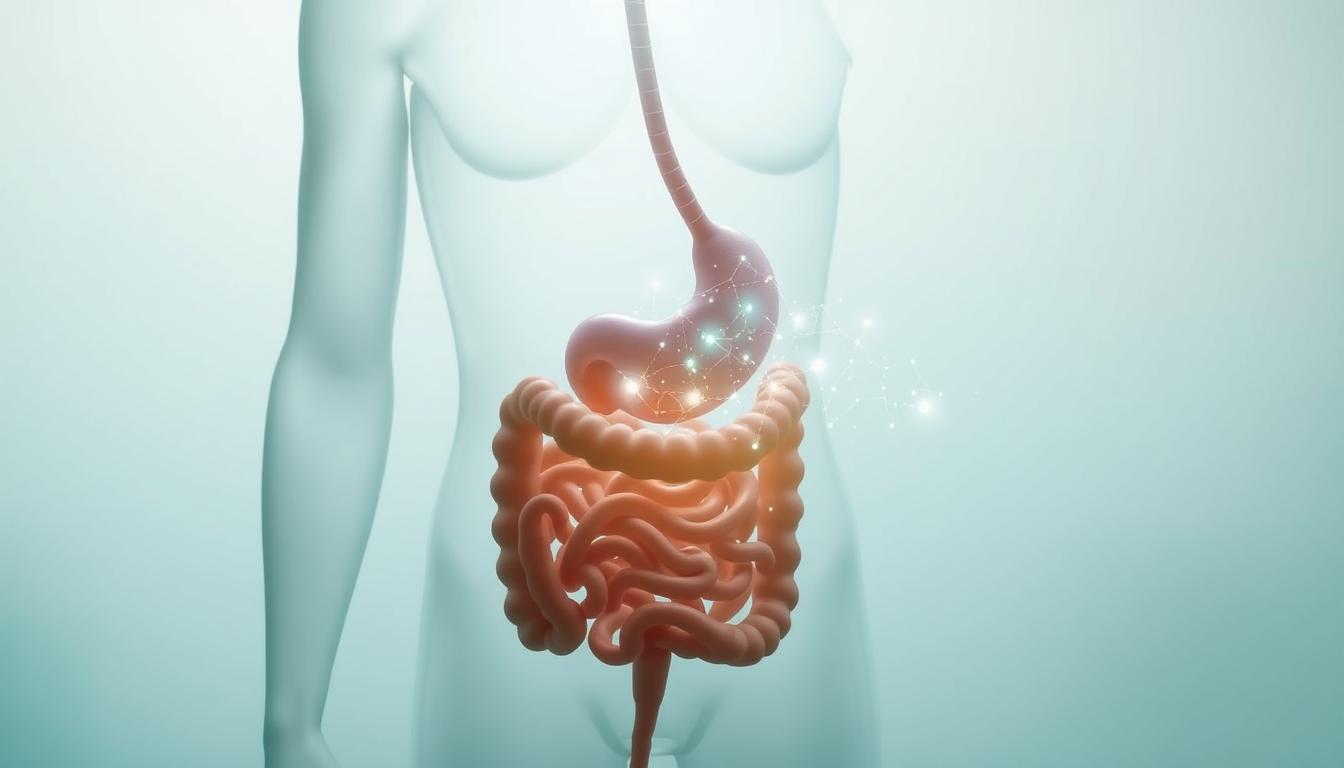Embarking on the path of water fasting requires not only determination but also a strategic approach to hunger management. The journey towards fasting benefits involves understanding the intricacies of appetite control and employing effective fasting strategies. Individuals who venture into the realm of water fasting discover a challenging yet rewarding experience punctuated by the need to overcome natural hunger signals. However, the ability to manage these urges is not elusive—it is grounded in science and practice.
The quest for a successful water fast intertwines with learning the delicate art of differentiating physiological hunger from habit-driven cravings. The mastery of this skill does not denote the absence of appetite, but rather a refined awareness and control of it. As hunger represents the body’s natural alarm for nourishment, refined fasting strategies can turn this challenge into an ally on the path to physical and mental wellness.
In navigating the fasting experience, individuals can tap into time-tested and science-backed methods that support one’s willpower, turning intermittent fasting into an attainable and sustainable venture. The key lies not in the silencing of hunger but in understanding its nature and harnessing it to enhance the overall fasting experience.
Key Takeaways
- Appetite control is crucial during water fasting to maintain focus on health goals.
- Recognizing the difference between physiological and emotional hunger aids in successful fasting.
- Effective hunger management is indicative of the body adjusting to the fasting state.
- Integrating mindful eating and cognitive strategies helps in mitigating hunger pangs.
- Fasting benefits extend beyond mere weight loss, contributing to overall wellness.
- A tailored approach to fasting enables individuals to navigate hunger signals efficiently.
- Water fasting is highlighted by scientific research as a transformative health practice.
Understanding Your Hunger Signals: Physical vs Emotional Appetite
In the landscape of water fasting, grasping the essence of your hunger signals is akin to finding a compass on an enigmatic journey. The awareness of appetite control is pivotal, as it can distinguish between physically necessitated sustenance and the alluring snare of emotional eating. When navigating the ebb and flow of hunger signals, it is crucial to decode the silent language of your body’s true needs versus the clamor of hedonic hunger—a siren call to indulgence without genuine hunger cues.
Embarking on the voyage of fasting, one encounters a myriad of sensory temptations and emotional currents that can lead them astray. The pathway to hormone regulation and appetite control lies in unveiling the physiological mechanisms behind hunger and honoring their intent. Here, we delve into the aspects of hunger oft-overlooked, ensuring that one’s fasting journey aligns with their intrinsic wellness goals while mitigating the gravitational pull of impulse-driven eating.
Deciphering True Hunger from Habitual Eating Cues
True hunger, an authentic calling from the depths of physiological need, is often veiled by habitual eating cues. In an age where abundance reigns, understanding the nudges to eat—the miscellaneous signals often misconstrued as hunger—becomes an art form. Recognizing the difference between a growling stomach and the mere habit of reaching for snacks due to boredom sets the stage for successful fasting and refined appetite control.
The Role of Hormones in Appetite Regulation
Hormone regulation plays a grand conductor’s role in the orchestra of hunger signals. The harmonious balance between ghrelin and leptin orchestrates a symphony of signals that control appetite—ghrelin, the hunger-rousing hormone, and leptin, the satiety-instilling counterpart. Understanding their flux and flow is imperative for individuals seeking to harness their hunger during periods of abstention, such as water fasting, where the mastery of one’s inner hormonal rhythm becomes essential.
Navigating “Hedonic Hunger” During Fasts
Circumnavigating hedonic hunger amid the fasting sojourn is akin to sailing in mystic waters where the sirens of sensory cues beckon. Hedonic hunger, the pursuit of pleasure through taste without the body’s cry for energy, can lead wanderers off course. Emotional eating, the seeking of comfort in food, often intertwines with this hedonic desire, clashing with the aim of appetite control. To sail past these deceptive islands, one must chart a course grounded in the wisdom of hormone regulation, steering one’s gaze toward the true north of physical hunger.
In summary, to sail the vast ocean of fasting is to understand one’s hunger signals—the distinction between physical hunger and emotional appetite. This endeavor is not about quelling the stomach’s protestations with haste but about listening intently and responding with wisdom. By discerning the intricacies of hunger with a keen and mindful approach, individuals can find solace during their fasting voyage, confident in their ability to navigate the waves of appetite with grace and resilience.
Managing Hunger During Water Fasts: Tips and Tricks
The journey of water fasting can be grueling due to the intense pangs of hunger that often accompany it. Managing hunger during such periods is not merely about willpower; it involves a series of strategies to stay satiated while abstaining from solid foods. Here we offer a repertoire of reliable methodologies to help you master the hunger challenge, ensuring that your fasting experience is enriching and free from the constant fight with cravings.
Mindful Eating arises as a powerful ally in suppressing hunger during fasts. This approach invites participants to consciously savor each sip of water or herbal tea, engaging fully with the process of consumption. During mindful eating, one becomes fully present in the moment, gaining awareness of the falsehoods of psychological cravings masquerading as physical hunger. Understanding this difference is a cornerstone of staying full during fasts, offering a mental resilience against the habitual impulse to eat.
Cognitive Behavioral Therapy (CBT) offers another valuable tactic in staying satiated during water fasts. Tools from CBT enable individuals to reframe their perspective on hunger, transforming destructive thoughts into positive reinforcements. Techniques such as journaling can aid in recognizing hunger triggers and developing constructive responses that enhance fasting resilience.
Additional tactics to engage in while fasting include diverting attention away from food. Engaging in light exercise, meditation, or reading can offer a refuge from the thoughts of eating, thus aiding in managing hunger during water fasts.
Let’s explore some nutritional strategies that contribute significantly to sensation management during fasts:
| Nutritional Strategy | Impact on Hunger Management | Recommendation |
|---|---|---|
| Protein Intake | Sustains satiety | Incorporate sufficient protein post-fast |
| Carbohydrate Selection | Regulates blood sugar levels | Choose complex carbs and avoid refined sugars |
| Dietary Fats | Promotes fullness | Include healthy fats in eating windows |
While abstinence from solid food marks intermittent fasting, it’s pertinent to ensure that the eating windows adjunct to your fasting regimen are optimized with macronutrients that reinforce satiety, a pivotal element in successful hunger management.
Understanding that hunger during a fast is both psychological and physiological enables a more comprehensive approach to managing it. While the body naturally signals the need for sustenance, the mind often echoes these signals with heightened intensity. Therefore, intercepting these with mindfulness and tactical nourishment can paint the experience of fasting from a challenging endeavor to a quest for psychological and physical rejuvenation.
Recall that during intermittent fasting, it is not about negation but about navigating sensations effectively, ultimately leading to a better relationship with food and a healthier body.
By appreciating and appropriating these tips and tricks, one steps away from merely enduring hunger to astutely managing it, making water fasting not just manageable, but also a period of profound personal growth.

Mindful Eating Techniques to Suppress Hunger
Embarking on the journey of intermittent fasting entails understanding your body’s cues and mastering ways to manage hunger. Strategies rooted in mindful eating anchor this understanding, enabling individuals to differentiate between true hunger and emotional triggers in eating. By closely observing the body’s actual needs versus habitual or emotional eating tendencies, one can find balance and sustenance throughout their fasting periods.
Practicing Awareness During Intermittent Fasting
Becoming aware of each sensation during the act of consumption is central to mindful eating. This involves taking note of one’s thoughts, feelings, and the environment during the eating window of intermittent fasting. Through this heightened awareness, fasting becomes a practice of nurturing the body and mind, committing fully to the experience rather than eating mechanically or out of boredom.
Recognizing True Hunger Versus Emotional Eating
Mindfulness in eating also encompasses the recognition of emotional eating triggers versus true hunger signals. An important aspect is listening to the body’s physiological signs, such as stomach grumbling and lightheadedness, which indicate a need for nourishment. In contrast, emotional eating often arises in response to stress or external cues like sight and smell of food, rather than actual hunger.
Implementing Mindful Pauses to Enhance Satiety
A practical step in the practice of mindful eating is taking mindful pauses between bites. This deliberate slowing down allows individuals to assess their satiety signals, letting the body process current intake and signaling when enough has been consumed. Such practices are foundational in building a harmonious fasting experience, aligning with the body’s satiety cues and promoting a sense of fullness, thereby preventing overeating.
| Mindful Eating Strategy | Description | Fasting Benefit |
|---|---|---|
| Awareness Observation | Consciously note physical sensations and emotional states during meals. | Helps distinguish true hunger from psychological needs. |
| Responsive Eating | Respond to body’s hunger signals appropriately, without automated eating. | Prevents excessive food intake outside of planned eating periods. |
| Mindful Pausing | Introduce occasional pauses during mealtime to reassess hunger levels. | Supports better digestion and reinforces satiety cues. |
By intertwining mindful eating techniques with the practice of intermittent fasting, one can maintain focus and composure, ensuring that fasting becomes not only a method for health benefits but also a transformative experience. Thus, acknowledging one’s internal signals and adapting behaviors accordingly paves the way for a more sustainable and insightful fasting path.
When we incorporate mindful eating into our fasting routine, we are more than eating; we are cultivating an intimate relationship with our bodies, learning its signals, and meeting its true needs.

Leveraging Cognitive Behavioral Strategies for Hunger Management
Integrating cognitive behavioral therapy (CBT) into the practice of intermittent fasting holds promise for those grappling with hunger management. This evidence-based psychological approach confronts the mental barricades that can truncate the myriad of fasting benefits. By identifying and adjusting negative thought patterns and behaviors, individuals learn to cultivate positive self-talk and strategic responses to hunger pangs. CBT is not merely a therapeutic intervention but an empowering toolkit for those seeking to master the psychological aspects of fasting.
Foremost among the strategies CBT provides is the development of robust coping mechanisms, enabling individuals to withstand the waves of hunger without capitulating to cravings. Instead of surrendering to the immediacy of appetite, fasting individuals harness positive self-talk and affirmations to realign their focus on the long-term health objectives. This shift not only aids in hunger management but also fortifies resolve, enhancing the possibility of experiencing the profound fasting benefits such as weight management, improved metabolic health, and a heightened sense of mental clarity.
Moreover, CBT facilitates the transformation of fasting from a daunting challenge into a more controlled and reflective process. The endurance fostered through the adoption of cognitive behavioral strategies equips individuals to navigate their fasting journey with greater ease, transforming potential hunger-induced vulnerabilities into milestones of self-regulation. Therefore, those who leverage CBT as part of their fasting regimen might not only rein in their hunger but also redefine their relationship with food and eating, unlocking the door to a more autonomous and health-centric lifestyle.




